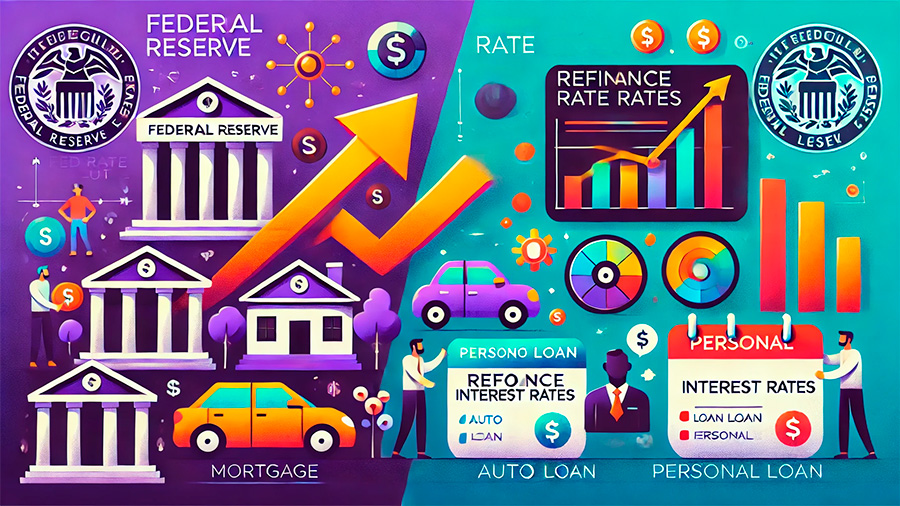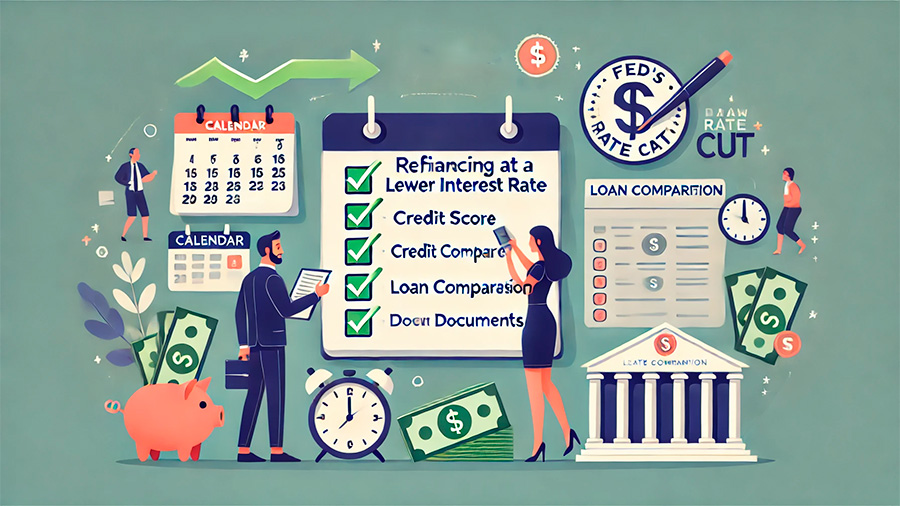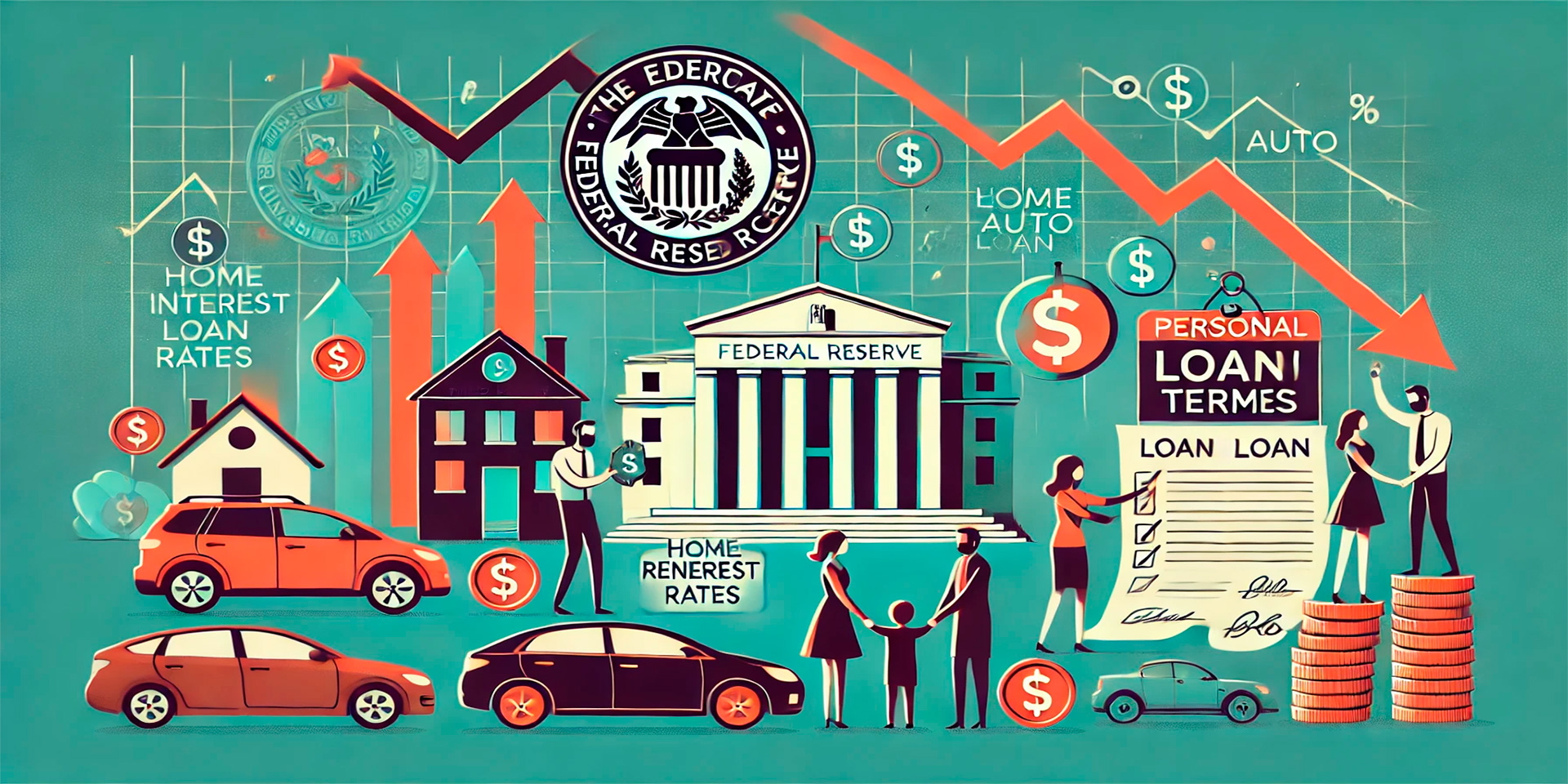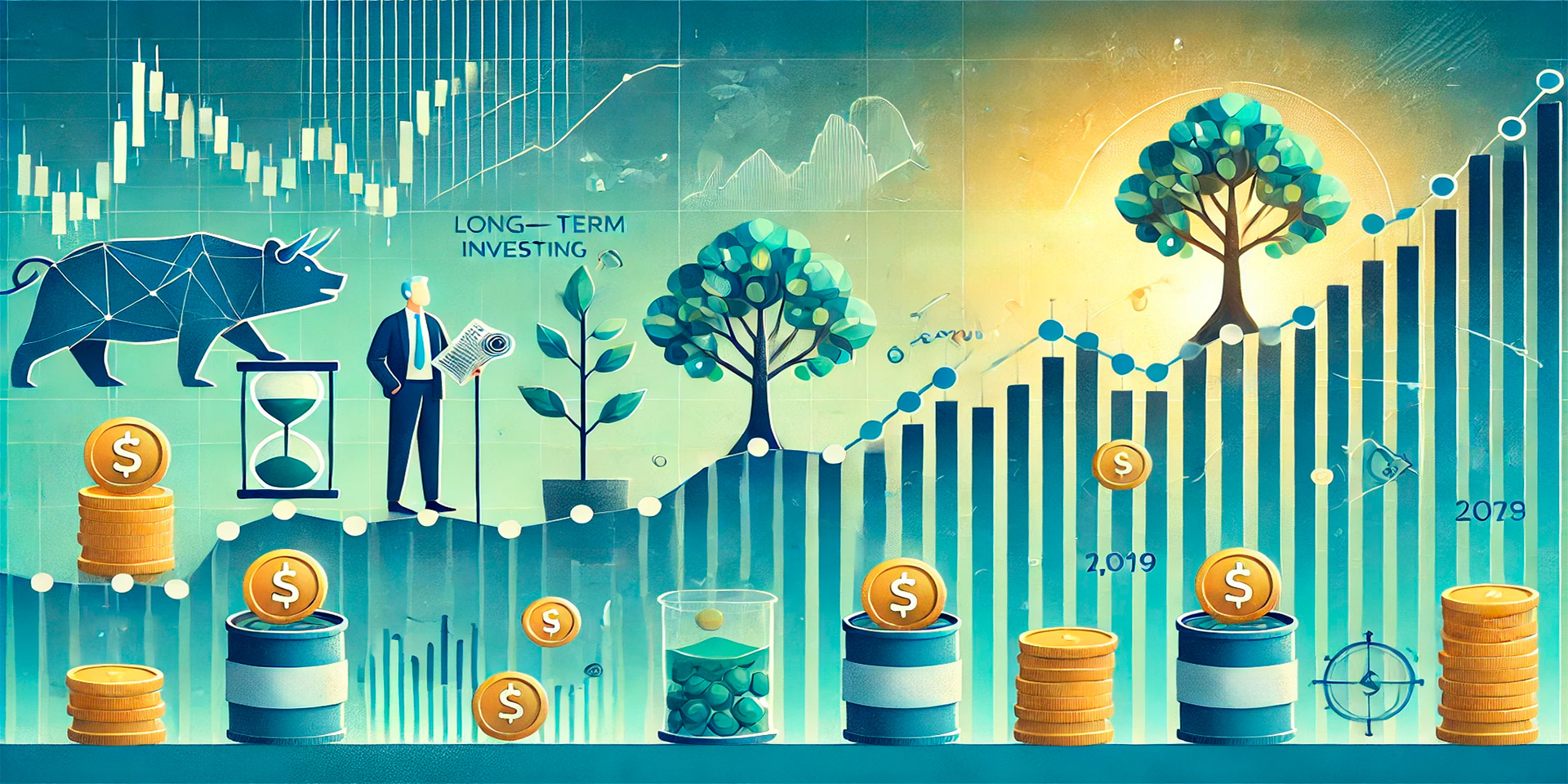When the Federal Reserve (Fed) cuts interest rates, it creates significant opportunities for consumers to refinance their existing loans at lower interest rates. The Fed’s decisions on interest rates influence the broader economy, including the cost of borrowing for mortgages, auto loans, and personal loans. For consumers with existing loans, refinancing during periods of lower interest rates can lead to substantial savings in monthly payments and overall interest costs.
Refinancing involves replacing an existing loan with a new one that has better terms, such as a lower interest rate. This process allows borrowers to reduce their loan payments, shorten the loan term, or even tap into home equity if refinancing a mortgage. A Fed rate cut can provide the ideal conditions for refinancing, making it easier and more affordable to manage debt.
This article explores how Fed rate cuts impact loan refinancing, what types of loans can be refinanced, and how consumers can take advantage of these opportunities to improve their financial situation.
Why Fed Rate Cuts Lead to Lower Refinancing Rates
The Federal Reserve sets the federal funds rate, which influences the overall cost of borrowing in the economy. When the Fed lowers interest rates, banks and other financial institutions can borrow money at a lower cost, which they pass on to consumers in the form of reduced loan interest rates. This is especially beneficial for those looking to refinance their loans.
Lower Interest Rates Mean Lower Monthly Payments
One of the most immediate benefits of refinancing after a Fed rate cut is a reduction in the interest rate on your new loan. By securing a lower rate, you can reduce your monthly payments, making your loan more affordable.
Impact on monthly payments: For example, if you have a $200,000 mortgage at a 5% interest rate, your monthly payment (excluding taxes and insurance) would be around $1,073 for a 30-year loan. Refinancing that loan at a 3.5% rate after a Fed rate cut would lower your payment to $898, saving you $175 per month.
Long-term savings: Over the life of a 30-year loan, this reduction in payments could save you more than $63,000 in interest.
Refinancing at a lower rate can significantly reduce your monthly financial burden and provide long-term savings on your loan.
Shortening Loan Terms with Refinancing
In addition to lowering monthly payments, refinancing after a Fed rate cut can help you shorten the term of your loan without dramatically increasing your payments. For example, if you’re paying off a 30-year mortgage, you might refinance into a 15-year loan at a lower rate, allowing you to pay off your loan faster while saving on interest.
Shorter loan terms: With lower interest rates, the payments on a 15-year mortgage may not be much higher than what you’re currently paying on a 30-year loan. This allows you to pay off your loan faster while saving on interest costs.
Interest savings: A shorter loan term means you’ll pay significantly less interest over the life of the loan. For example, refinancing a $200,000 mortgage from a 30-year term to a 15-year term at a lower interest rate could save you tens of thousands of dollars in interest.
By refinancing into a shorter-term loan, you can reduce your debt faster and save more on interest, making this strategy ideal for those looking to become debt-free sooner.

Types of Loans That Can Be Refinanced After a Fed Rate Cut
A Fed rate cut creates opportunities to refinance various types of loans. Whether you have a mortgage, auto loan, or personal loan, refinancing can help you take advantage of lower rates and reduce your overall borrowing costs.
Mortgage Refinancing
Mortgage refinancing is one of the most common types of refinancing, especially when interest rates drop. Lower mortgage rates can significantly reduce your monthly payments or allow you to build equity faster by switching to a shorter-term loan.
Rate-and-term refinancing: This is the most straightforward type of refinancing, where you replace your current mortgage with a new one that has a lower interest rate or different loan terms.
Cash-out refinancing: If you have built equity in your home, a cash-out refinance allows you to take out a new mortgage for more than you currently owe, giving you access to cash that you can use for home improvements, debt consolidation, or other expenses.
Refinancing a mortgage when the Fed cuts rates can lead to substantial savings, whether you’re looking to lower your payments or access your home equity.
Auto Loan Refinancing
Refinancing an auto loan after a Fed rate cut can help you lower your interest rate and reduce your monthly payments. Auto loan rates tend to follow the overall interest rate environment, so when the Fed cuts rates, lenders often reduce their auto loan rates as well.
Lower monthly payments: If you’re paying a higher interest rate on your current auto loan, refinancing at a lower rate can make your monthly payments more manageable. For example, refinancing a $25,000 auto loan from 6% to 3% interest could save you $35 per month.
Shorten loan terms: Like mortgages, you can also use refinancing to shorten the term of your auto loan, allowing you to pay off the vehicle faster while reducing interest costs.
Auto loan refinancing is a straightforward way to take advantage of lower rates, especially if you financed your vehicle at a time when interest rates were higher.
Personal Loan Refinancing
Personal loans often come with higher interest rates compared to mortgages or auto loans. When the Fed cuts rates, lenders may offer lower interest rates on personal loans, creating an opportunity for borrowers to refinance and reduce their monthly payments.
Consolidate debt: Refinancing a personal loan can also be used to consolidate high-interest credit card debt or other loans into a single, lower-interest loan. This simplifies your payments and reduces the total amount of interest you’ll pay over time.
Flexible terms: Personal loan refinancing can offer more flexible terms, such as adjusting the loan duration to fit your financial needs or lowering the interest rate to reduce overall costs.
Personal loan refinancing is a valuable option for borrowers looking to lower their interest payments or consolidate debt after a Fed rate cut.

How to Take Advantage of Refinancing Opportunities
Refinancing at a lower interest rate can save you a significant amount of money, but timing and preparation are essential to maximizing the benefits. Here’s how you can take advantage of refinancing opportunities when the Fed cuts rates.
Monitor Interest Rate Trends
Interest rates don’t always move immediately after a Fed rate cut, so it’s important to monitor rate trends and compare offers from different lenders. Rates can fluctuate based on market conditions, so being aware of the timing can help you lock in the lowest possible rate.
Compare lenders: Not all lenders react to Fed rate cuts in the same way. Compare mortgage rates, auto loan rates, and personal loan rates from multiple lenders to find the best offer.
Act quickly: If rates drop significantly, act quickly to lock in the lower rate. Some lenders allow you to lock in a rate while you complete the refinancing process, ensuring you get the most favorable terms.
By keeping an eye on rate trends and acting at the right time, you can maximize the benefits of refinancing.
Improve Your Credit Score
Your credit score plays a key role in the interest rate you’re offered, even when rates are falling. Borrowers with higher credit scores qualify for the best rates, so improving your credit score before refinancing can help you secure a lower rate.
Boost your credit: Pay off existing debt, avoid missed payments, and correct any errors on your credit report to boost your credit score. Even a small improvement in your credit score can result in a lower interest rate.
Credit impact on rates: For example, a borrower with a credit score of 750 may qualify for a mortgage refinance at 3%, while a borrower with a score of 650 may be offered a 5% rate. Improving your credit score could save you thousands in interest costs over the life of the loan.
Improving your credit score before refinancing ensures you’re in the best possible position to take advantage of lower rates.
Calculate Your Break-Even Point
Refinancing isn’t free, so it’s important to calculate your break-even point to determine if refinancing makes sense for your situation. The break-even point is the point at which the savings from your lower monthly payments equal the costs of refinancing, such as closing costs or origination fees.
Break-even example: If refinancing a mortgage costs $3,000 in fees and lowers your monthly payment by $150, your break-even point would be 20 months. If you plan to stay in the home for more than 20 months, refinancing makes financial sense.
Factor in fees: Be mindful of any additional fees associated with refinancing, such as application fees or prepayment penalties. These costs can affect whether refinancing is beneficial in the long run.
Calculating your break-even point helps you understand the financial impact of refinancing and ensures that it aligns with your long-term goals.
Final Thoughts: Refinancing During a Fed Rate Cut
Fed rate cuts create significant opportunities for refinancing loans, allowing consumers to lower their interest rates, reduce monthly payments, and save on overall borrowing costs. Whether you’re refinancing a mortgage, auto loan, or personal loan, acting during periods of lower interest rates can provide substantial financial benefits.
To maximize these opportunities, monitor rate trends, compare offers from different lenders, and ensure your credit score is in good shape before applying for refinancing. By carefully calculating your break-even point and understanding the costs associated with refinancing, you can make informed decisions that will improve your financial health and lower your debt burden.
When the Fed lowers rates, take advantage of the opportunity to refinance and secure more affordable loan terms, setting yourself up for long-term savings and financial success.





